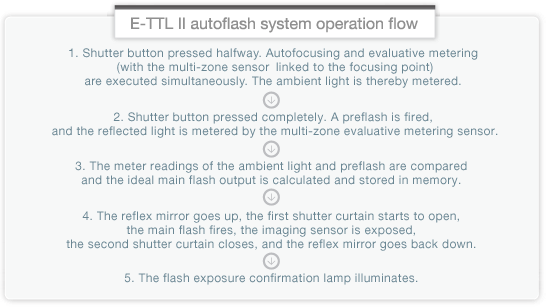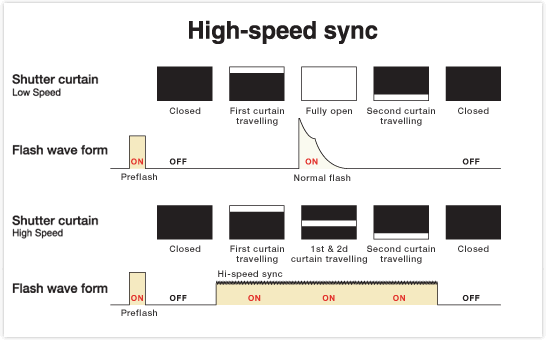First off let me start by stating the obvious. I'm no lighting expert like Joe McNally, David Hobby or Bob Krist, all of which use Nikon strobes by the way. I'm just a guy with a few Canon Speedlites that wants to better understand how these amazing little strobes work and what makes them "tick".
Flash Exposure
The first thing to understand is that a flash exposure is really two separate exposures in one; first the ambient light which would hit the sensor in that shooting situation if flash were not used and second, the light contributed by the flash itself. Once you begin to understand this principle, you can use it to create all sorts of very cool "effects" which add natural light and flash together.
TTL Metering
The term "TTL" refers to the camera's "through-the-lens" metering system. Canon's E-TTL II system is a proprietary automatic flash exposure control system similar to Nikon's i-TTL system where the camera uses multiple metering zones which measure both ambient light and strobe's preflash to determine the "ideal" exposure. The system compares the two values and uses metering distances to automatically adjust the flash duration to achieve what it perceives as the ideal exposure of both the subject and background.
Canon's E-TTL II System
If all this seems a little confusing at first, don't worry. The basics of how this system works is shown in the illustration below.

Borrowed from Canon's Flash Work site.
Focal Plane High-Speed Sync
Daylight fill-flash is a lighting technique often used when shooting outdoor portraits because it "fills in" underexposed areas of the subject's face and strikes a good balance between the exposure of the subject and background. Because the camera's shutter speed cannot be set faster than the X-sync speed of the flash, the aperture must be reduced to compensate for extra brightness which changes the depth of field.
To overcome this issue, Canon Speedlites offer FP (focal plane) high-speed sync mode which can synchronize with a shutter speed that is faster than the camera's rated flash X-sync speed. This availability of faster shutter speeds allows the aperture to be set more freely. And when a fast lens is used, the aperture can be fully opened to achieve beautiful blur effects or bokeh.
When these fast shutter speeds are selected, the second shutter curtain begins closing before the first curtain fully opens. The light only hits part of the sensor at normal flash settings, but the FP high-speed sync flash setting fires repeatedly at roughly 50kHz intervals during the exposure to achieve flash synchronization at all shutter speeds.

Borrowed from Canon's Flash Work site.
Posted in Photography Tagged: Canon, Canon Flash Work, Canon Speedlites, FP High-Speed Sync Flash
![]()
No comments:
Post a Comment